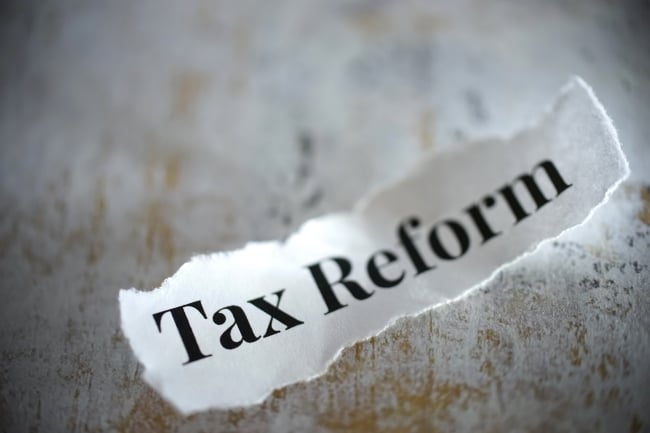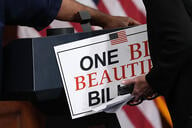You have /5 articles left.
Sign up for a free account or log in.

iStockphoto.com/Kameleon007
No one is sure exactly how many colleges and universities will have to shell out under a new excise tax in the revamped tax code, as key definitions and details have yet to be decided. But the number seems likely to rise in the future as endowment values grow.
So how many more colleges will be paying an excise tax in five years, 10 years or 15 years? An economics professor at Wellesley College has run some numbers to come up with preliminary estimates.
The professor, Phillip B. Levine, pulled data on institutions’ endowment values from the Integrated Postsecondary Education Data System in order to make his calculations. He used endowment values from the 2015-16 year as a base, finding that 23 institutions would have been subject to the new 1.4 percent excise tax on earnings had it been in place that year.
Then he forecast endowment values for future years, assuming various annual total growth rates. The result: the number of institutions subject to the endowment tax could grow to a range of 31 to 41 in five years, depending on the speed at which endowments grow. Between 41 and 61 institutions could have to pay the tax in 10 years, and between 55 and 80 could have to pay it in 15 years.
Projected Number of Colleges and Universities Paying Endowment Tax in the Future
| Assumed Rate of Growth | 5 years | 10 years | 15 years |
|---|---|---|---|
| 4 percent | 31 | 41 | 55 |
| 6 percent | 36 | 53 | 65 |
| 8 percent | 41 | 61 | 80 |
None of this is set in stone. Federal regulators are going to have to define several parts of the new tax law, which calls for the annual excise tax to be levied on net investment income at private colleges and universities that have at least 500 students and net assets of $500,000 per student.
Observers are still waiting for key details about how colleges and universities will be required to calculate full-time-equivalent students for the per-student endowment valuation. They are also waiting for guidance on which institutional assets will be counted toward the tax.
“I think calculating the tax is not as difficult as figuring out what goes into the endowment or what is accepted in the definition they put out there,” said Daniel Romano, managing partner for nonprofit taxation at the audit and advising firm Grant Thornton. “Will institutions be able to maybe not designate things as endowment? That’s a possibility.”
Earlier estimates about the number of institutions that would be subject to the tax have varied based on sources of data and assumptions made. Stock market volatility and enrollment fluctuations make it difficult to project which institutions will be subject to the tax, according to a spokesman for the National Association of Independent Colleges and Universities, which in December estimated about 30 institutions would be subject to the tax. Other factors that cloud the forecast include hard-to-predict donor behavior and changes in institutions’ endowment spending patterns.
Levine acknowledges a number of factors could cause reality to play out differently from his forecasts. He made several assumptions in order to perform the analysis. He used endowment values listed in IPEDS for his starting point and assumed the entire endowment values will be taxed. He kept institutions’ enrollment steady over time, counting each part-time student as half of a full-time student when calculating full-time-equivalent students.
He also limited his analysis to private nonprofit institutions granting bachelor’s degrees or higher that receive Title IV funds. He did not include institutions with fewer than 500 students. Levine assumed colleges and universities would not significantly change their endowment spending rates, even after they have to pay a 1.4 percent excise tax on earnings.
Institutions’ endowment value per student could diverge from the projections if they change their enrollment levels, bring in more donations, lose donors or spend more or less from their endowments. But Levine didn’t speculate which institutions would change their policies or how.
That wouldn’t be a forecast, he said. “That would be a guess.”
Levine calculated the annual growth rates for the country’s top 100 endowments measured on a per-student basis between 2002-03 and 2015-16. The rates he calculated were not limited to endowments’ investment returns -- they included gifts to endowments, investment returns they generated, and spending from them.
Past growth rates varied significantly by institution, but the overall average from 2002-03 to 2015-16 was between 5 percent and 6 percent annually. That’s roughly the same annualized rate shown by National Association of College and University Business Officers data between 1995-96 and 2014-15, Levine said.
With the growth rate from the past serving as a benchmark, Levine calculated future changes in a low-growth scenario in which endowment values grow by 4 percent per year across the board, a middle-of-the-road scenario in which they grow 6 percent per year and a high-growth scenario with 8 percent annual growth.
“I was surprised as I looked through the list at the number of small schools that rise to the top,” Levine said. “It’s probably not surprising that Harvard, Yale, Stanford and Princeton are way up there, but there are schools with multibillion-dollar endowments that you hear of as being big-endowment schools that don’t show up because they also have a large number of students.”
For instance, even assuming a high 8 percent annual rate of endowment growth, the 13,800-student Boston College would not be subject to the endowment tax in 2031. But the 830-student Harvey Mudd College would have to pay it in 2031 even in a low-growth scenario of 4 percent annually.
Institutions could try to avoid the tax with enrollment strategies. Those near the $500,000-per-student tax cutoff could try to add more students, which would drop their per-student asset values. But many economists are skeptical that the calculation will be that simple.
There are opportunity costs to admitting more students, Levine said. For instance, some institutions might not have enough housing to increase enrollment by enough to dodge the tax.
“That would require building a new dorm,” he said. “What are you going to have to pay?”
Levine reached another conclusion -- that the new tax won’t raise a large amount of money for the federal budget. The Joint Committee on Taxation has estimated the measure will raise $1.8 billion over 10 years -- in a package that increases the federal deficit by almost $1.5 trillion over that time frame.
“It can’t raise revenue of any consequence,” Levine said. “It can’t possibly be about the tax revenue. It’s got to be about the signal it’s sending.”
Of course, some could argue the money raised was important as Republicans tried to thread the needle of passing a package complying with legislative rules limiting the amount that could be added to the federal deficit. Indeed, some critics have charged the endowment tax is only about raising money.
The measure is about taking money donated for charitable purposes and “redirecting it for no other reason but to meet unrelated government revenue needs,” Mark S. Wrighton, chancellor of Washington University in St. Louis, wrote in a letter to U.S. Senator Roy Blunt in November.
“The endowment excise tax proposal also singles out a set of universities based on an arbitrary set of criteria,” Wrighton wrote. “The number of enrolled students, size of the endowment and private nonprofit university status have absolutely nothing to do with the quality of an institution’s education offerings and research, its efficiency in operations or other services provided.”
Washington University in St. Louis would not have been subject to the endowment tax in 2016, slotting in just below the $500,000-per-student limit, according to Levine’s calculations. But it would move above the tax’s cutoff in 2021, even assuming a low-growth scenario of 4 percent annually.
A longtime backer of taxing endowments has said the new tax was meant as an accountability and oversight measure for institutional investments that are accumulating money on a tax-free basis.
“Hopefully, through this process we bring more transparency to the issue,” Tom Reed, a Republican congressman from New York, told Politico in December. “I think it’s only fair to the American taxpayer.”




